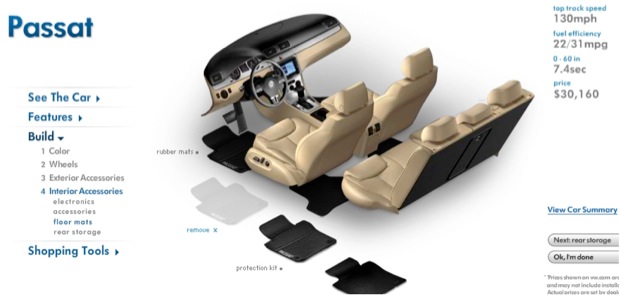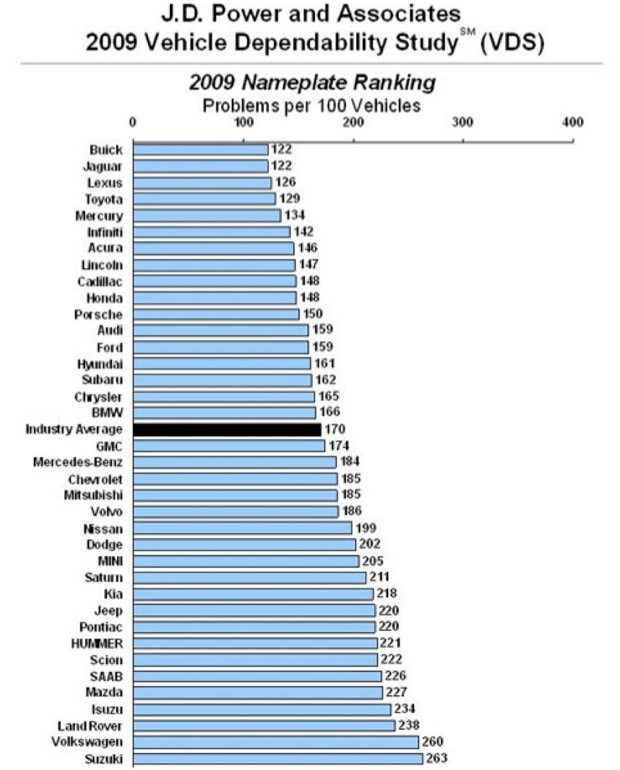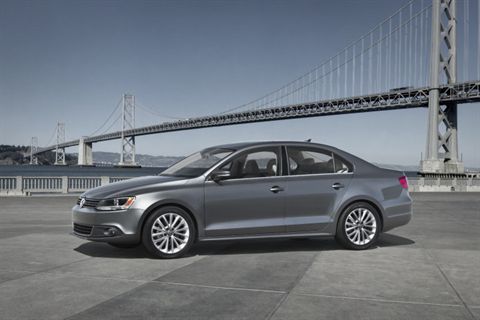




Background
For decades, the only real mass-market players in the US were Honda, Toyota, GM, Ford, and Chrysler, with an honorable mention going to Nissan. The Germans successfully stuck to the high end of the market with BMW and Mercedes-Benz and remain America’s top two selling luxury car brands, dethroning Cadillac and Lexus.
[No one cares about Lincoln.]
Among all car brands available in America, Volkswagen has only 2% of the US market and has remained there for most of the last decade.

Compare that to Hyundai coming out of nowhere at 9% for 2011 and its easy to see how Volkswagen is shocked and worried by the Korean invasion. Surprisingly well-made and attractively designed cars like the 2011 Kia Optima and Hyundai Sonata offer 268hp and luxurious interiors for less than $26,000.
The 2010 Volkswagen Passat cost $30,000 and came with a 200hp 4-cylinder engine, questionable reliability, and a less spacious interior.
Look at this comparison between the Accord and Passat from last year and the difference is quite clear:


Both vehicles have leather, automatic transmissions, 4-cylinder engines, navigation, and 31 mpg highway fuel economy. One has proven dependability, more room, and a lower sticker price (Accord).
Volkswagen reentered the minivan category too late, and with nothing suitable for North America, VW partnered with Chrysler to build the 2009 Routan. Routan was a rebadged Grand Caravan with a mildly improved interior and the glaring absence of Chrysler’s highly regarded convenience features like Stow-and-Go and Swivel-and-Go seating. The Routan was still powered by Chrysler’s 4.0L V6 and looked identical to the Chrysler van except for the headlights, grille, hood, and fenders. It also cost $1000 more.
It was missing important features and it cost more money. Gosh, I wonder why nobody bought one?
As a result, Routans piled up on dealer lots. Here’s some pictures from Dean Team Volkswagen in St Louis. where brand new Routans were stuffed under some trees in the back of the used car lot:
Then there was the Volkswagen Phaeton, a stunning $100,000 luxury sedan with absolutely no reason to exist, competing with Mercedes-Benz and Bentley on the upper echelon of high-end cars.
I imagine the sales pitch going something like this:
“Oh, you might enjoy this $30,000 Passat, but you can also step up to the Phaeton for only a hundred grand…”
Quality and reliability issues certainly didn’t help, with Volkswagen repeatedly pegging the bottom of JD Power’s dependability study:

VW’s North American head, Stefan Jacoby, had big plans in 2007, intending to sell 600,000 vehicles per year in the United States by making Volkswagen appeal to mainstream Americans. Obviously, Volkswagen fell hundreds of thousands of vehicles short of that goal with its peak sales year in 2001 at 355,000 units. By 2009, sales were down to 213,000 and market share was dwindling away.
Stefan Jacoby is gone, now working for Volvo.
What now?
Despite all of this, Volkswagen rose to prominence as the world’s largest automaker by volume, with a brand portfolio that includes Porsche, Audi, Bentley, Lamborghini, Seat, and Skoda. Most of its success has been in Europe, with only 4% of sales volume from North America.
Here in the states, VW is tired of being a niche with big plans for growth, including price reductions to position its products directly at Toyota, Hyundai, Kia, Chevy, and Ford.
The new Passat is a whopping $8000 cheaper than the outgoing model, and with its cheap new interior, it certainly shows.
The new Jetta drops its price by nearly two grand and loses its upscale interior in the process, with cheap new furniture that looks more suitable in a Corolla. The Jetta also loses its independent rear suspension, replaced with a rear torsion beam that makes an ox cart look sophisticated. Entry-level models suffer with drum brakes — drum brakes!

Styling could be summed up as inoffensive, again aiming squarely at the miserably bland top-selling Toyota Corolla.
It seems like Volkswagen’s master plan for conquering America is to abandon its niche and offer cheaply built, uninteresting mass-market cars at a reduced price.
Unfortunately for VW, The Koreans are already five steps ahead, building high-quality, desirable vehicles for the cost of a shoe shine. Even GM and Ford have stepped up with the new Chevy Cruze, Ford Focus, and Ford Fusion.
At this rate, Das Auto is doomed to failure.
Leave a Reply